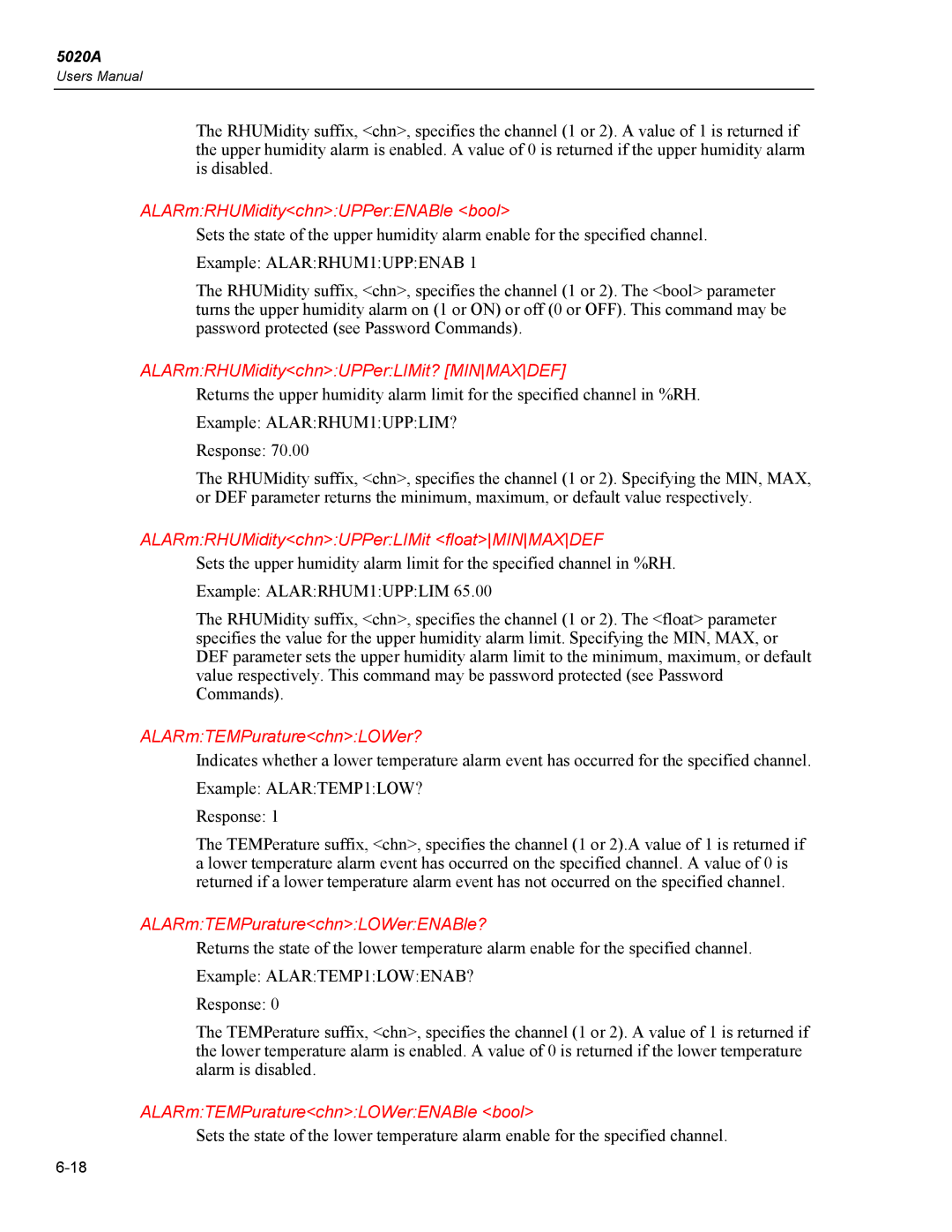5020A
Users Manual
The RHUMidity suffix, <chn>, specifies the channel (1 or 2). A value of 1 is returned if the upper humidity alarm is enabled. A value of 0 is returned if the upper humidity alarm is disabled.
ALARm:RHUMidity<chn>:UPPer:ENABle <bool>
Sets the state of the upper humidity alarm enable for the specified channel. Example: ALAR:RHUM1:UPP:ENAB 1
The RHUMidity suffix, <chn>, specifies the channel (1 or 2). The <bool> parameter turns the upper humidity alarm on (1 or ON) or off (0 or OFF). This command may be password protected (see Password Commands).
ALARm:RHUMidity<chn>:UPPer:LIMit? [MINMAXDEF]
Returns the upper humidity alarm limit for the specified channel in %RH. Example: ALAR:RHUM1:UPP:LIM?
Response: 70.00
The RHUMidity suffix, <chn>, specifies the channel (1 or 2). Specifying the MIN, MAX, or DEF parameter returns the minimum, maximum, or default value respectively.
ALARm:RHUMidity<chn>:UPPer:LIMit <float>MINMAXDEF
Sets the upper humidity alarm limit for the specified channel in %RH. Example: ALAR:RHUM1:UPP:LIM 65.00
The RHUMidity suffix, <chn>, specifies the channel (1 or 2). The <float> parameter specifies the value for the upper humidity alarm limit. Specifying the MIN, MAX, or DEF parameter sets the upper humidity alarm limit to the minimum, maximum, or default value respectively. This command may be password protected (see Password Commands).
ALARm:TEMPurature<chn>:LOWer?
Indicates whether a lower temperature alarm event has occurred for the specified channel. Example: ALAR:TEMP1:LOW?
Response: 1
The TEMPerature suffix, <chn>, specifies the channel (1 or 2).A value of 1 is returned if a lower temperature alarm event has occurred on the specified channel. A value of 0 is returned if a lower temperature alarm event has not occurred on the specified channel.
ALARm:TEMPurature<chn>:LOWer:ENABle?
Returns the state of the lower temperature alarm enable for the specified channel. Example: ALAR:TEMP1:LOW:ENAB?
Response: 0
The TEMPerature suffix, <chn>, specifies the channel (1 or 2). A value of 1 is returned if the lower temperature alarm is enabled. A value of 0 is returned if the lower temperature alarm is disabled.
ALARm:TEMPurature<chn>:LOWer:ENABle <bool>
Sets the state of the lower temperature alarm enable for the specified channel.
